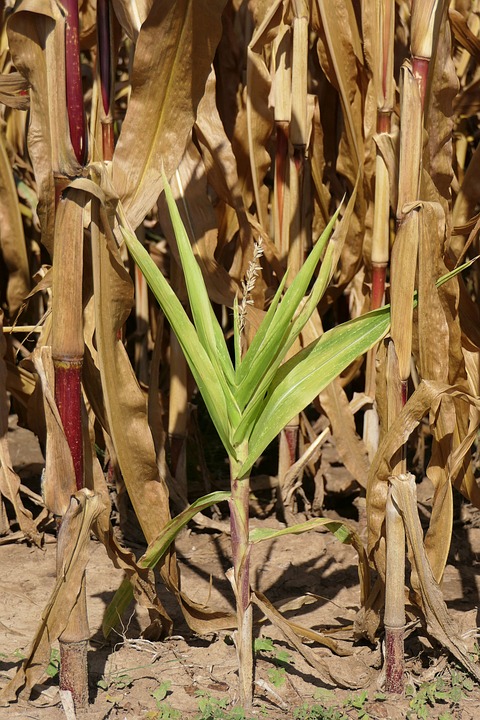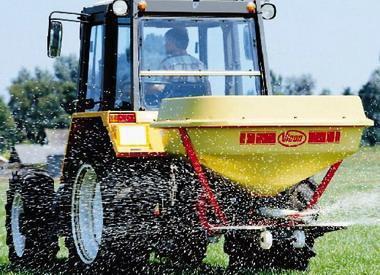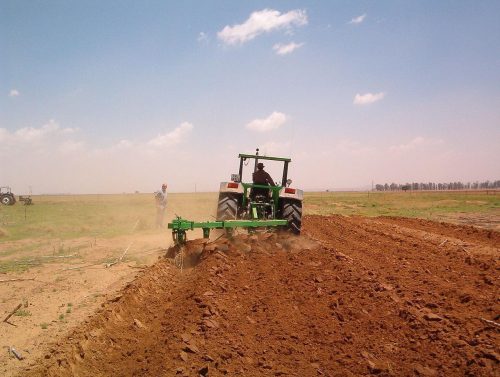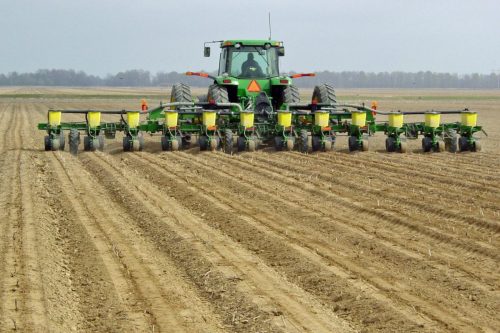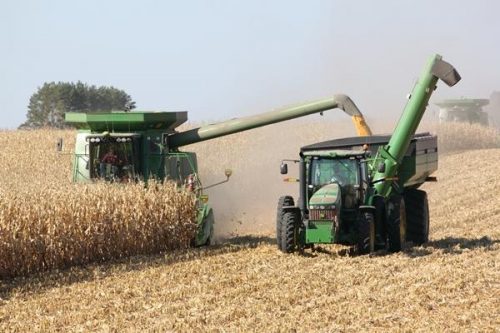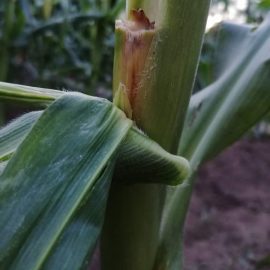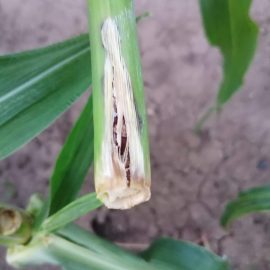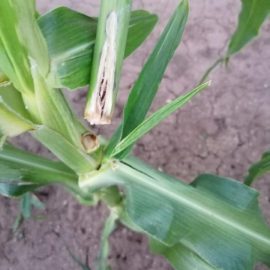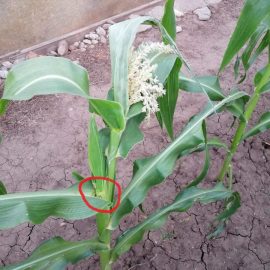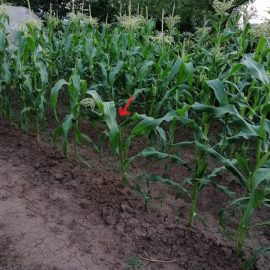Corn, cultivation and harvesting technology
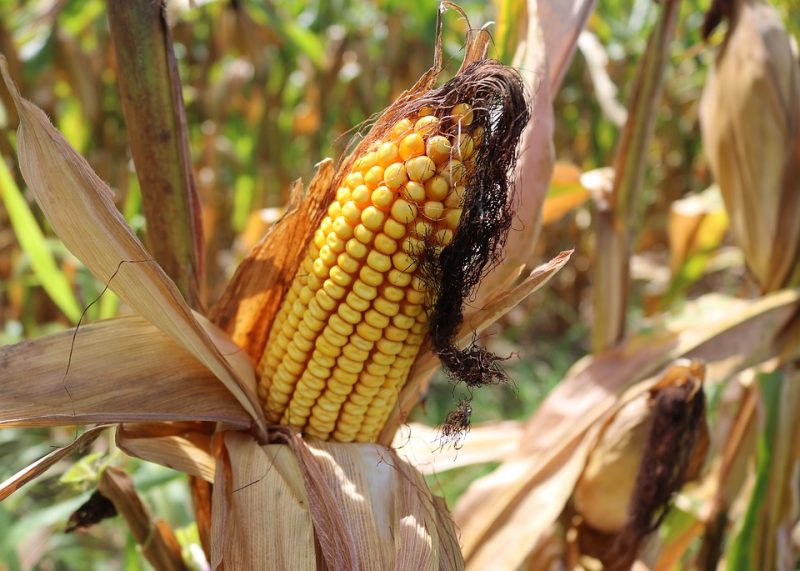
Corn (Zea mays) ranks third in importance among the plants cultivated on Earth. This position is acquired thanks to a series of properties: corn has a high production capacity, it has high ecological plasticity, due to which, it is widespread all over the globe, it is a good precursor plant for most crops, tolerates monoculture, can be cultivated 100% mechanized and the harvest is done without shaking.
The stem is made up of 7-15 internodes full of marrow, which totals an average height of 1.5 -3 m. The leaves have a long foliar limb, 50-80 cm in size, with a width of 4-12 cm and wavy edges, which gives them flexibility. Inflorescences: the male flowers are clustered at the top in a panicle-like inflorescence, and the female ones are clustered in spadix-like inflorescences. Pollination is anemophilous (by wind). The fruit is a caryopsis. Corn can withstand drought well, grows well in bright light, and ensures good yields on a wide variety of soils.
Corn crop technology
Crop rotation
Corn is not very pretentious regarding the preceding plant. Good results are achieved after annual legumes are cultivated for grains or fodder. The wheat-corn rotation is mandatory, in this rotation corn is favored since two crops can be obtained per year. Corn should not be grown after sorghum and Sudan grass.
Fertilization
Due to the high production of dry matter per unit area, corn is a consumer of nutrients. Fertilization with mineral fertilizers is recommended and it causes substantial increases in production. The main substances used to fertilize corn are nitrogen, phosphorus, and potassium (NPK group). Nitrogen ensures the development of a rich foliar mass, which will favorably influence the accumulation of protein substances in grains. Phosphorus plays a role in the growth and fruiting of corn. Potassium increases resistance to diseases, drought, and fall.
Corn also reacts positively to foliar fertilizer application.
Recommended products
-
You can find products on a different store
Change Store -
You can find products on a different store
Change Store -
You can find products on a different store
Change Store -
You can find products on a different store
Change Store -
You can find products on a different store
Change Store -
You can find products on a different store
Change Store -
You can find products on a different store
Change Store -
You can find products on a different store
Change Store -
You can find products on a different store
Change Store -
You can find products on a different store
Change Store -
You can find products on a different store
Change Store -
You can find products on a different store
Change Store -
You can find products on a different store
Change Store -
You can find products on a different store
Change Store -
You can find products on a different store
Change Store -
You can find products on a different store
Change Store -
You can find products on a different store
Change Store -
You can find products on a different store
Change Store -
You can find products on a different store
Change Store -
You can find products on a different store
Change Store -
You can find products on a different store
Change Store -
You can find products on a different store
Change Store -
You can find products on a different store
Change Store -
You can find products on a different store
Change Store
Field works
It has to be done immediately after cleaning the land from the precursor plant. The aim is to work the soil to a depth of 25-28 cm, incorporate the vegetable remains and fertilizers, grind and level the soil. The seedbed must be carefully prepared so that the soil is ground to a depth of 3-6 cm. In order to avoid the settlement of the soil and for fuel economy, fertilizers, herbicides, or insecticides can be administered together with the preparation of the seedbed.
Seeds and sowing
Before sowing, the most suitable hybrids for the pedoclimatic factors in the area have to be selected. The seeds must have a minimum purity of 98% and minimum germination of 90%. The seeds must be treated against diseases and pests with specific products. Sowing corn has to be done when the temperature of the soil, at 7 o’clock in the morning, at a depth of 10 cm, is at least 8° C and the weather is getting warmer. In the lowland area, sowing is normally done between April 1-20 and between April 15-30 in the other areas.
Density is an important technological factor in corn cultivation. This varies between 40-70 thousand plants/ha, depending on the pedoclimatic factors, the hybrid used or whether the crops are irrigated. The amount of seeds per hectare varies between 15-30 kg. The distance between the rows is 70 cm or 80 cm for sprinkler irrigated crops. The sowing depth is 5-6 cm in moist soils and 6-8 cm in dry soils.
Diseases and pests
The main diseases that can occur in corn cultivation are bacterial stalk rot of maize, loose smut, diplodia ear and stalk rot, rust. Among the pests, the most common is the western corn rootworm, the European corn borer, the cotton bollworm, the grey corn weevil, wireworms.
Weed control
It is the most important work when caring for corn crops. Due to the slow growth rate in the early stages of the vegetative growth period and the low density per unit area, corn cannot compete with the weeds. Losses caused by weeds can be between 30-90%. To control them, mechanical weeding can be carried out or herbicides can be applied.
Recommended products
-
You can find products on a different store
Change Store -
You can find products on a different store
Change Store -
You can find products on a different store
Change Store -
You can find products on a different store
Change Store -
You can find products on a different store
Change Store -
You can find products on a different store
Change Store -
You can find products on a different store
Change Store -
You can find products on a different store
Change Store -
You can find products on a different store
Change Store -
You can find products on a different store
Change Store -
You can find products on a different store
Change Store -
You can find products on a different store
Change Store -
You can find products on a different store
Change Store -
You can find products on a different store
Change Store -
You can find products on a different store
Change Store -
You can find products on a different store
Change Store -
You can find products on a different store
Change Store -
You can find products on a different store
Change Store -
You can find products on a different store
Change Store -
You can find products on a different store
Change Store -
You can find products on a different store
Change Store -
You can find products on a different store
Change Store -
You can find products on a different store
Change Store -
You can find products on a different store
Change Store
Irrigation
The water consumption of corn varies between 4800-5800 cubic meters/ha. The critical period is between June 20-30 and August 20-30.
Harvesting
This operation can be performed manually or mechanized. In the case of manual harvesting, the cobs are removed without the maize husks. In the case of mechanized harvesting, the cobs can be removed when the grain moisture reaches 24-30%. Mechanized grain harvesting is the most widely used type of harvesting in the world. This can be done when the grain moisture drops below 25%.














































































































































































































































































































































































































































